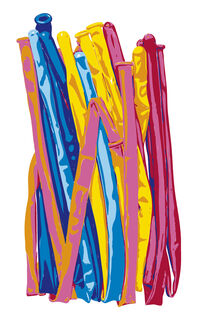Günter Beier
The richness of detail in depictions of banal objects such as balloons, plastic cutlery or rubber bands is particularly impressive in photorealistic representations and opens up a new way of looking at things that we no longer pay attention to in everyday life.
Photorealism, which emerged in the late 1960s after Pop Art, is dedicated to the mere reproduction of reality. The preferred subjects of the photorealists and hyperrealists are mostly everyday motifs such as food, toys, cars, or urban scenes.
Günter Beier, born in Wuppertal, Germany, in 1959, uses brightly coloured sweets or a pile of rubber bands as motifs, which he stylises into an aesthetic art object with strong colours: "I take up trivial motifs in order not to lead the viewer into an intellectual, instructive or informative debate. In everyday use, they contain an aesthetic that becomes visible through painterly exaggeration and enlargement."
Light reflections, colour, and surface structures create the perfect illusion, which is precisely brought onto the large-format canvas in the form of a grid or with a projector. The artist, who lives in Hamburg, shows us the joy of the colours of the things in our world - that even the small things are worth looking at more closely.

